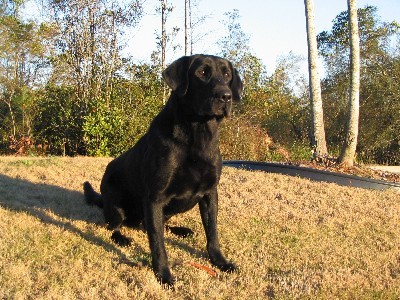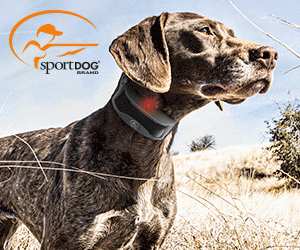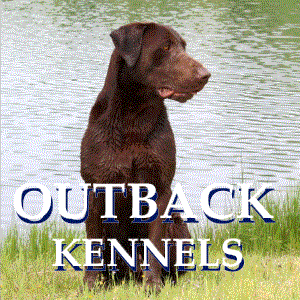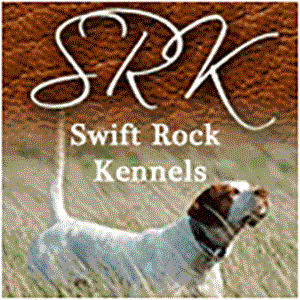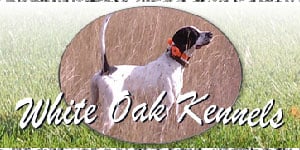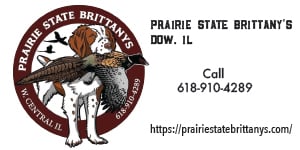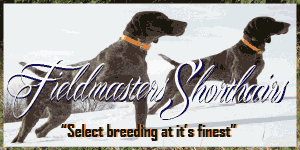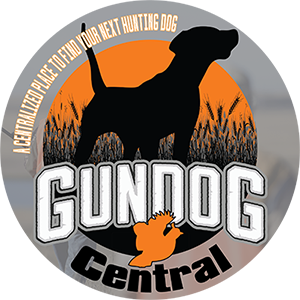Retriever Corner
Posted 03/28/2008
There are many schools of thought regarding progression with yard basics. In this article I will address my personal schedule aimed specifically at the T pattern drill I use in developing skills needed for swim-by work and beginning cold blind work.
To begin with, my program is designed to lay a foundation of certain tools before formal introduction is made to the retriever. Taught principles such as: heel, here, sit, back, over, remote sit, mechanics of multiples, associational fetch command (teach the word fetch in relation to a retrieving act as pup is taking an object...food at first...from your hand), two-sided walking heel, introduction to back piles, live bird exposure, collar conditioning to here (THE most important tool early in my program), etc., etc., etc.
After these tools are in place (usually between 5-7 months of age for a pup that begins at 8 weeks with me) I begin the formal process of teaching the commands as mandatory starting with hold, aggrevated hold, and hold during obedience lessons. I continue progressing through the entire force fetch program until the candidate is properly schooled on fetch/hold in all areas of training (land, water, live birds, dead birds, smelly birds, ducks, pheasants, frozen birds, de-feathered birds, and of course bumpers.
All during this process, if the retriever's field work is progressing with a proper retrieve to hand (or general area), I continue marking advancement with a slight emphasis on teaching multiples and introducing steadiness as a method of the retrieving process (be still and you get to go).
By the time my students reach the T yard they are somewhat educated in the entire program and really need advancement/maturing to move ahead. Therefore, I spend most of my T yard training centered around the back pile developing proper go-stop-come back traits. I introduce force and deal appropriately per student with the resulting behavior (bolting, bugging, no-goes, flaring, whistle refusals, improper casts (give right back but the student takes a left back), etc. I do not introduce over piles until the student is very precise on the back pile demands. This process of working the back pile could last for days or even weeks with some candidates...the standard is do not move ahead until the back pile is mastered.
After the back pile is mastered I introduce the over piles with the casting apex somewhere about one-third the distance to the back pile. Again, I remain with the single over piles until the student is fully capable with regards to running to the back pile, stopping en-route, and casting to any of the three piles in all directions (right back, right over, left back, left over). I generally run about three or four back sends for every stop and cast send. I also generally toss a few fun-bumpers during the process to the back-pile (or down the back-pile line since the distance is usually beyond throwing reach) to keep that line the main focus of the drill.
After the student has mastered the "single-T" pattern I move in to my pattern blind field that is chocked full of obstacles that the dog must learn to maneuver around/through in order to go straight and be successful, Click to view our fields. This process can take weeks to master (or just a few days for some students).
After the student has mastered the pattern blind field I move back to the T yard and set up my pattern in a Y fashion and begin teaching angle-back casting. I teach the lines from the casting apex by sending the student from my side directly to the desired pile. The previous pattern field lessons help the student to ignore the center back pile they are running past to get to the angle pile thus the progression of my drills. When the student is properly lining the angle piles I begin teaching the angle casts from the apex then I progress to adding in the back send and finish by requiring all four casts (two angles two backs) before moving back to the initial "back-pile" starting line previously taught/mastered in the single T drill. I then run the pattern as before in the single T with the Y pattern until the drill is mastered with all sends/casts taken precisely.
Finally, I finalize my T work by adding the over piles back in the pattern with the Y and run all legs of the drill until mastered.
My emphasis on this drill is that of the back casts and angled casts. In my program of "literal casting" an over cast is not a tool often used. The "literal casting" technique I subscribe to is centered around taking a true initial line (thus the reason and design of my pattern field) and requring the retriever to remain on that line througn a series of incremental straight back and angled back casts. In other words, if my student requires an "over" cast I have not done my job properly up to the point where the cast is needed. This type of handling requires much of the handler and much of the student. The result is a cleaner blind running product that remains true to the initial line and is pleasing to the eye.
The over casts are essential in swim-by lessons and can be employed if needed in certain situations (getting on and off of points) thus the reason they are taught. However, my emphasis remains on true initial lines, true direct back casts, and solid angle back casts.
Good training!
Keith Farmer
To begin with, my program is designed to lay a foundation of certain tools before formal introduction is made to the retriever. Taught principles such as: heel, here, sit, back, over, remote sit, mechanics of multiples, associational fetch command (teach the word fetch in relation to a retrieving act as pup is taking an object...food at first...from your hand), two-sided walking heel, introduction to back piles, live bird exposure, collar conditioning to here (THE most important tool early in my program), etc., etc., etc.
After these tools are in place (usually between 5-7 months of age for a pup that begins at 8 weeks with me) I begin the formal process of teaching the commands as mandatory starting with hold, aggrevated hold, and hold during obedience lessons. I continue progressing through the entire force fetch program until the candidate is properly schooled on fetch/hold in all areas of training (land, water, live birds, dead birds, smelly birds, ducks, pheasants, frozen birds, de-feathered birds, and of course bumpers.
All during this process, if the retriever's field work is progressing with a proper retrieve to hand (or general area), I continue marking advancement with a slight emphasis on teaching multiples and introducing steadiness as a method of the retrieving process (be still and you get to go).
By the time my students reach the T yard they are somewhat educated in the entire program and really need advancement/maturing to move ahead. Therefore, I spend most of my T yard training centered around the back pile developing proper go-stop-come back traits. I introduce force and deal appropriately per student with the resulting behavior (bolting, bugging, no-goes, flaring, whistle refusals, improper casts (give right back but the student takes a left back), etc. I do not introduce over piles until the student is very precise on the back pile demands. This process of working the back pile could last for days or even weeks with some candidates...the standard is do not move ahead until the back pile is mastered.
After the back pile is mastered I introduce the over piles with the casting apex somewhere about one-third the distance to the back pile. Again, I remain with the single over piles until the student is fully capable with regards to running to the back pile, stopping en-route, and casting to any of the three piles in all directions (right back, right over, left back, left over). I generally run about three or four back sends for every stop and cast send. I also generally toss a few fun-bumpers during the process to the back-pile (or down the back-pile line since the distance is usually beyond throwing reach) to keep that line the main focus of the drill.
After the student has mastered the "single-T" pattern I move in to my pattern blind field that is chocked full of obstacles that the dog must learn to maneuver around/through in order to go straight and be successful, Click to view our fields. This process can take weeks to master (or just a few days for some students).
After the student has mastered the pattern blind field I move back to the T yard and set up my pattern in a Y fashion and begin teaching angle-back casting. I teach the lines from the casting apex by sending the student from my side directly to the desired pile. The previous pattern field lessons help the student to ignore the center back pile they are running past to get to the angle pile thus the progression of my drills. When the student is properly lining the angle piles I begin teaching the angle casts from the apex then I progress to adding in the back send and finish by requiring all four casts (two angles two backs) before moving back to the initial "back-pile" starting line previously taught/mastered in the single T drill. I then run the pattern as before in the single T with the Y pattern until the drill is mastered with all sends/casts taken precisely.
Finally, I finalize my T work by adding the over piles back in the pattern with the Y and run all legs of the drill until mastered.
My emphasis on this drill is that of the back casts and angled casts. In my program of "literal casting" an over cast is not a tool often used. The "literal casting" technique I subscribe to is centered around taking a true initial line (thus the reason and design of my pattern field) and requring the retriever to remain on that line througn a series of incremental straight back and angled back casts. In other words, if my student requires an "over" cast I have not done my job properly up to the point where the cast is needed. This type of handling requires much of the handler and much of the student. The result is a cleaner blind running product that remains true to the initial line and is pleasing to the eye.
The over casts are essential in swim-by lessons and can be employed if needed in certain situations (getting on and off of points) thus the reason they are taught. However, my emphasis remains on true initial lines, true direct back casts, and solid angle back casts.
Good training!
Keith Farmer
Related Aritlces
Retriever Corner
There are many schools of thought regarding progression with yard basics. In this article I will address my personal schedule aimed specifically at the T pattern drill I use in developing skills needed for swim-by work and beginning cold blind work.


